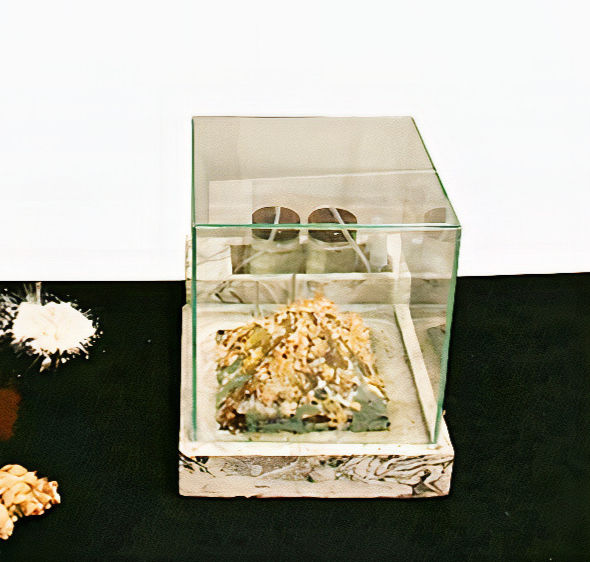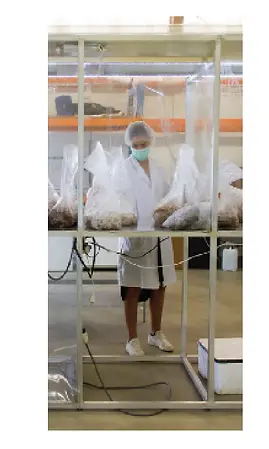COOK THE KITCHEN
Mycelium, the vegetative part of a fungus, forms a dense network of branching hyphae. Its unique properties—lightweight, fire-resistant, insulating, and even edible—make it a promising material for sustainable design. My research explores mycelium's regenerative potential, focusing on creating functional products while considering its role in a circular economy. From edible tableware to bioplastics that guide its growth, I delve into how mycelium can reshape material innovation.

EDIBLE TABLEWARE
During my time working in the lab at Mediamatic Amsterdam, I researched and developed edible tableware. These plates and bowls, crafted from mycelium, offer a sustainable alternative to disposable products. They can be dried and stored for takeaway foods or freshly prepared and served in a restaurant. This edible design demonstrates how mycelium can merge utility and sustainability, providing a zero-waste solution to modern dining.

DIRECTED GROWTH
I researched the use of bioplastics mixed with nutrients and mycelium spores. I wanted to find out how this plastic could direct the growth. It also allows for molding the substrate into different shapes, where the plastic is slowly eaten by and replaced with mycelium while keeping the shape. Finally, I researched using bioplastic as glue to connect alive mycelium panels. That allows building large, single-piece and alive structures, as the glue is replaced by mycelium, thus connecting the mycelium panels to each other. Alive structures that have the potential to regenerate.





